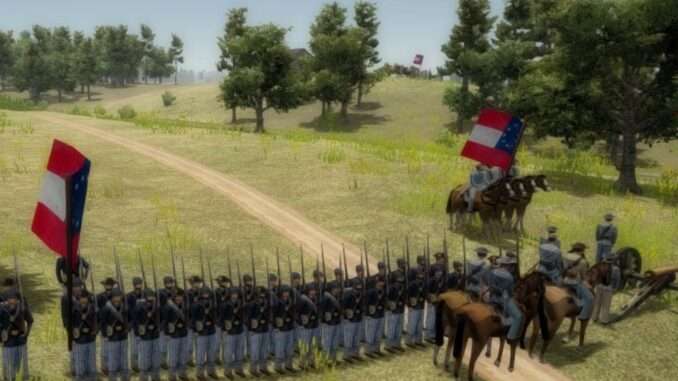
Tips to Economy
So here’s the deal. This war is gonna cost a lot. No matter what side you play, your debt is gonna climb and your credit is gonna plummet. Playing optimally and successfully managing the economy is all about slowing down the rate at which your economy tanks. There are a number of things to keep in mind.
A common mistake most new players will make is to look at the economy warning tooltip and see that they are underproducing a product that is in high demand and then instinctively building farms or factories to help produce that product. Building expensive buildings using money from your treasury (without having accrued enough subsidies) is a bad idea. Instead, what you want to try and do is make the existing buildings more profitable so that they can automatically upgrade on their own without you having to spend government funds on them.
If you’re a decent player and you’re playing the unmodded vanilla game, the chances are you’re going to win the game by late 1862 to mid 1863. Building things like factories and ironworks simply don’t pay for themselves in a span of 2 or 3 years. As a matter of fact the general consensus is that you should avoid building most buildings so as to keep your economy afloat. This is especially true as the Confederacy.
With that said, there are still some buildings that are quite useful and some that are actually vital to help keep industries profitable.
Markets are fantastic. They significantly increase the amount of goods that can be bought and sold per week in the IIPs (important infrastructure points) like towns and ports around them. Prioritise them around your large ports or railways that are bringing in high sales taxes. Having markets around industrial zones as well as around large cities is a great idea. Cities generate a lot of demand for non military goods and allowing more trade volume around these areas means you can collect more sales taxes. More sales taxes helps ease the pain on your bottom line every year. The reason you want markets around your main industrial zones (where your factories and ironworks are) is so that they can sell more products every week (again more sales tax) and also because you want more pre-goods (raw materials) to reach them to keep costs down. Markets will help make a lot of buildings profitable.
When a building is very profitable due to low production costs and high demand for its products, private investors will upgrade it from level 1 to level 2 to level 3.
As the armies grow huge, the demand for provisions skyrockets. Provisions require food and salt. Food becomes a huge bottleneck in the early game. Food can be produced in a factory using either grain, livestock or flour. The availability of salt multiplies the food output by a factor of 1.5. So salt becomes a HUGE deal (as it was historically). It is an excellent idea to build enough salt works to meet the demand as early as possible. Put them in areas with high workforce ideally around factories so they can buy the salt nice and cheap. This will make food production very lucrative for your factories and help keep them profitable. Food is always the most highly demanded product throughout the entire campaign.
Another imporant thing you should remember to do is to mothball the supply depots in your rear areas that aren’t supplying your armies. You put them on red to make sure they stay empty and prevent them competing with the forward supply depots on the front line for vital supplies like ammunition and provisions.
Be smart with where and when you build supply depots. An army of 120 thousand men can actually stay very well supplied without a single supply depot in range if it’s in a city with a huge port and railway towns in range. Supply depots are expensive to build, expensive to fill and aren’t always necessary. Local supply can often more than meet an army’s demand with the added benefit of generating more sales taxes for you in the area where your army is encamped. This is why control of the railways, rivers and ports is so vital (again as it was historically). Always try to plan your offensives so that your armies will be in range of a railway or even better, an unblockaded port that is connected to the rest of your trade network.




Be the first to comment